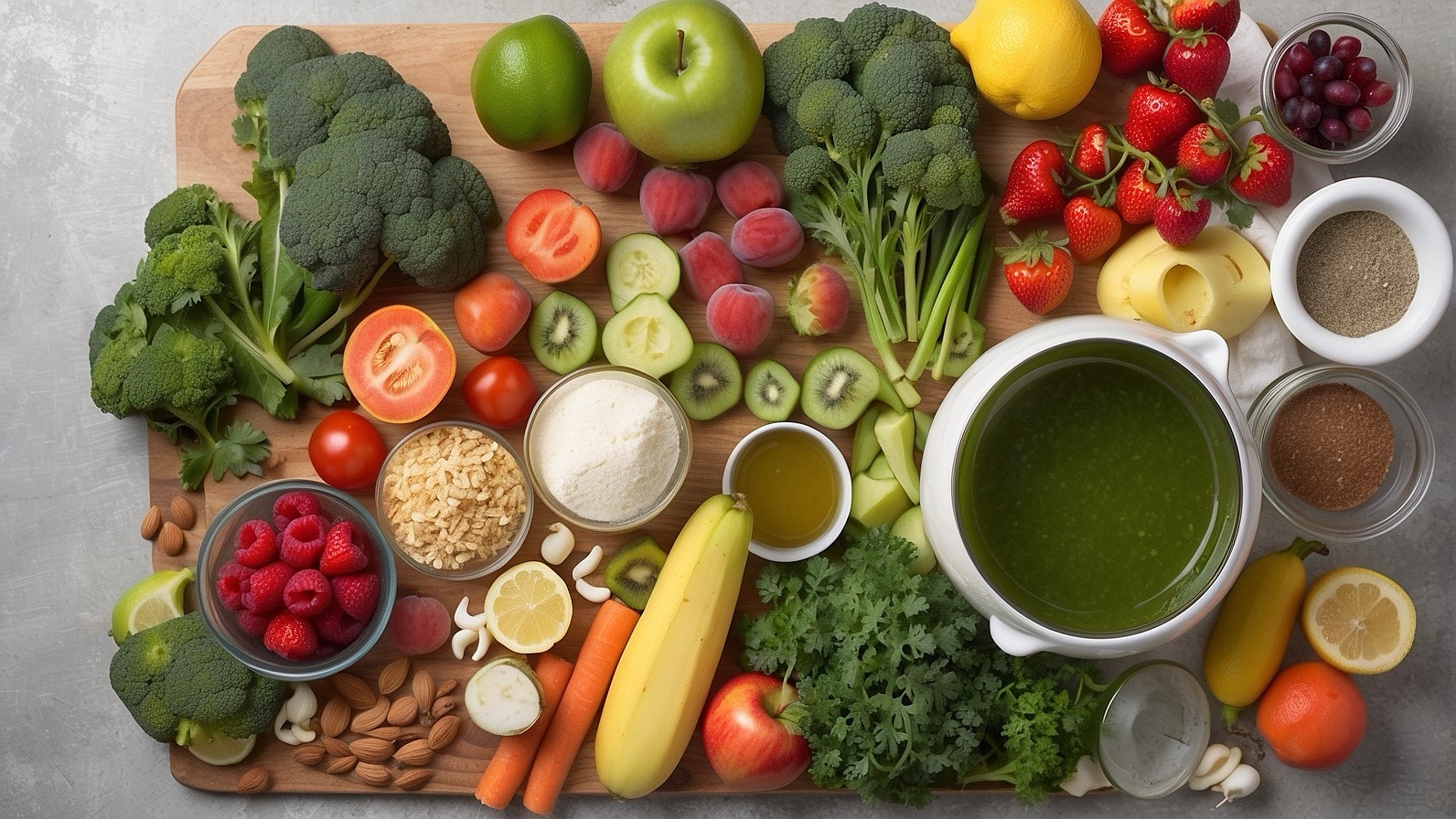 Mind
Mind
- Digital and Modern Well-being
- Mental Health and Emotional Well-being
- Mind-Body Connection and Holistic Health
- Parenting and Family
- Personal Growth and Development
- Relationships and Social Well-being
- Stress and Relaxation
- Therapeutic and Creative Practices
- Trauma and Recovery
- Work, Productivity, and Discipline
 Body
Body
 Fitness
Fitness
 Food
Food
 Beauty
Beauty
Benefits of Raw Food Diets

The Benefits of Raw Food Diets: A Comprehensive Guide
The raw food diet is based on the idea that eating food in its natural, uncooked state preserves its nutrients and enzymes, providing numerous health benefits. While this diet may seem restrictive at first, it has gained popularity for its focus on fresh, whole, and unprocessed foods. In this guide, we’ll explore the key benefits of raw food diets, how they impact health, and offer tips on adopting this lifestyle.
1. What Is a Raw Food Diet?
A raw food diet consists primarily of uncooked and unprocessed plant-based foods, with the belief that heating food above 40–48°C (104–118°F) destroys its nutrients and beneficial enzymes. The diet usually includes fruits, vegetables, nuts, seeds, and sprouted grains. Some people also include raw dairy, fish (such as sushi), or raw eggs, but the diet is often vegan.
Key Principles of a Raw Food Diet:
- Foods are consumed in their natural state.
- Heating is avoided or limited to low temperatures.
- Organic, whole foods are preferred over processed or packaged items.
- Hydration is emphasized, often through raw fruit and vegetable juices.
2. The Top Benefits of a Raw Food Diet
a. Higher Nutrient Intake
Raw foods retain more nutrients compared to cooked foods, especially heat-sensitive vitamins like vitamin C and B vitamins. This means you get more of the natural vitamins, minerals, and antioxidants from fruits, vegetables, and nuts, helping to boost your overall nutrient intake.
b. Increased Energy Levels
Many people report feeling more energetic after switching to a raw food diet. Since raw foods are packed with vitamins, enzymes, and healthy fats, they help support better digestion and faster nutrient absorption, leading to increased energy levels.
c. Improved Digestion
Raw foods are rich in natural enzymes that assist in breaking down food during digestion. Cooking often destroys these enzymes, which may lead to digestive strain. Additionally, raw fruits and vegetables contain fibre, which promotes healthy bowel movements and reduces the risk of constipation.
d. Weight Loss and Maintenance
Due to the high water content and fibre in raw foods, this diet can help with weight loss by keeping you fuller for longer with fewer calories. The emphasis on whole, plant-based foods also naturally reduces intake of processed sugars, unhealthy fats, and refined carbohydrates, making it easier to manage your weight.
e. Better Skin Health
Many people on raw food diets notice improvements in their skin. The antioxidants and vitamins in raw fruits and vegetables, especially vitamin A, E, and C, can promote collagen production and help repair skin cells, resulting in a clearer and more radiant complexion.
f. Lower Risk of Chronic Diseases
A raw food diet is linked to a reduced risk of chronic diseases like heart disease, diabetes, and certain cancers. This is partly due to the diet’s emphasis on nutrient-dense, anti-inflammatory foods. The high intake of plant-based antioxidants and phytonutrients supports heart health and reduces the risk of oxidative stress and inflammation, both of which contribute to chronic illnesses.
g. Detoxification
Raw foods, particularly fruits and vegetables, are rich in water and fibre, which help detoxify the body by flushing out toxins and supporting liver function. A raw food diet is often promoted as a way to cleanse the body of harmful substances, leading to improved overall health.
3. Potential Challenges of a Raw Food Diet
a. Nutrient Deficiencies
While raw food diets provide many essential nutrients, they can sometimes lack certain vitamins and minerals such as vitamin B12, iron, calcium, and omega-3 fatty acids. This is especially true for those following a raw vegan diet. It’s important to ensure you get enough of these nutrients, possibly through fortified foods or supplements.
b. Difficult to Maintain
A raw food diet can be challenging to maintain long-term, as it requires a lot of planning and preparation. Finding fresh, organic produce and ensuring variety in your meals can be time-consuming, and dining out may become more difficult.
c. Low Caloric Intake
Raw food diets tend to be lower in calories, which can be a benefit for those looking to lose weight, but may not provide enough energy for people with higher calorie needs, such as athletes or pregnant women.
4. Tips for Transitioning to a Raw Food Diet
If you’re interested in trying a raw food diet, here are a few tips to help you transition smoothly:
a. Start Slowly
Transitioning to a raw food diet doesn’t have to be all or nothing. Start by incorporating more raw fruits and vegetables into your meals and gradually increase the percentage of raw foods over time.
b. Focus on Variety
To ensure you’re getting a wide range of nutrients, aim to include a variety of fruits, vegetables, nuts, seeds, and sprouted grains in your diet. The more colours on your plate, the better!
c. Plan Your Meals
Meal planning is key to maintaining a raw food diet. Make sure you have easy, go-to recipes that require minimal preparation and keep your kitchen stocked with raw essentials like fresh produce, nuts, seeds, and sprouted grains.
d. Stay Hydrated
Raw foods naturally contain a lot of water, but it’s still important to drink plenty of fluids. Incorporate raw fruit and vegetable juices, smoothies, and herbal teas into your routine to stay hydrated.
e. Supplement When Necessary
If you’re following a raw vegan diet, consider supplementing with vitamins like B12, D, and omega-3 fatty acids to avoid deficiencies.
5. Common Foods in a Raw Food Diet
Here’s a list of some staple foods commonly included in raw food diets:
- Fruits: Apples, bananas, berries, citrus fruits, avocados
- Vegetables: Leafy greens (spinach, kale), cucumbers, bell peppers, carrots
- Nuts and Seeds: Almonds, sunflower seeds, chia seeds, flaxseeds
- Sprouted Grains: Quinoa, buckwheat, sprouted wheat bread
- Raw Fats: Coconut oil, cold-pressed olive oil, avocado
- Raw Dairy (for some): Unpasteurized cheese or raw milk
- Fermented Foods: Sauerkraut, kimchi, kombucha, miso
6. Conclusion
A raw food diet offers numerous health benefits, from improved digestion to clearer skin, weight management, and reduced risk of chronic diseases. While it may be challenging to maintain and requires careful planning to avoid nutrient deficiencies, incorporating more raw foods into your diet can be a great way to boost overall health and well-being.
If you’re considering a raw food diet, start by introducing more raw fruits and vegetables into your daily routine and experiment with easy-to-make recipes. With the right approach, a raw food diet can be an exciting and rewarding lifestyle change!
